Camping is all about getting back to basics and experiencing the beauty of our natural world. Despite this, it can still feel daunting to try it for the first time. As someone who has camped hundreds (and hundreds) of nights over the last few years, I’m here to help!
Read on to discover everything you need to know about planning for your first camping trip, from choosing a campground and essential camping gear to campfire and wildlife safety.

This guide is primarily aimed at first time car campers (backpacking version coming soon!) It is written from the perspective of camping in British Columbia, Canada, but would still be relevant to anyone looking to go camping for the first time in a vehicle accessible campground. Let’s get started!
Published July 2020. This post includes affiliate links. If you make a purchase through one of these links, I may receive a small commission from the sale at no extra cost to you.
First time camping tips
When considering camping for the first time, I strongly believe you should try and keep it as simple as possible:
- Go camping for one or two nights at first, preferably close to home
- Consider borrowing or renting gear to save money
- Bring more food than you think you’ll need (no-one likes to be hungry!)
- Bring clothing for rain, cold and hot weather, no matter the forecast!
- Make a camping checklist to use while packing (join our mailing list for a free one)
- Get familiar with your camping gear before leaving home
When camping, be ready to Leave No Trace of your visit. This ensures that these beautiful places remain so for future visitors and safe for wildlife. I believe it is also important to respect that many camping areas in British Columbia (and indeed, across Canada) are located on unceded First Nation territory.

Where to go camping for the first time
Here in British Columbia, we have five main categories of campgrounds:
- Provincial and national frontcountry campgrounds
- Private campgrounds
- Recreational Sites
- Backcountry (not accessible by vehicle)
- Crown Land
Each of these campground variations all offer a different camping experience. Indeed, every campground is unique too! Depending on where you live, there may be more (or less) categories of campgrounds.
For your first ever camping experience, I would recommend choosing a provincial or national park campground.
- Provincial/national park campgrounds are usually well organised and provide defined, private campsites in areas of natural beauty
- Typically, each campsite will have a fire pit and picnic table
- Washrooms are communal and will include outhouses and/or flush toilets
- In most campgrounds, there will be a on-site campground host or park facility operator
Many provincial and national park campgrounds are very popular and advance reservations are essential to avoid disappointment. But having a reservation isn’t always necessary.
Private campgrounds are a good alternative first-time camping option, particularly for RV users. Facilities and services do vary, but there will be on-site staff to help with any issues.
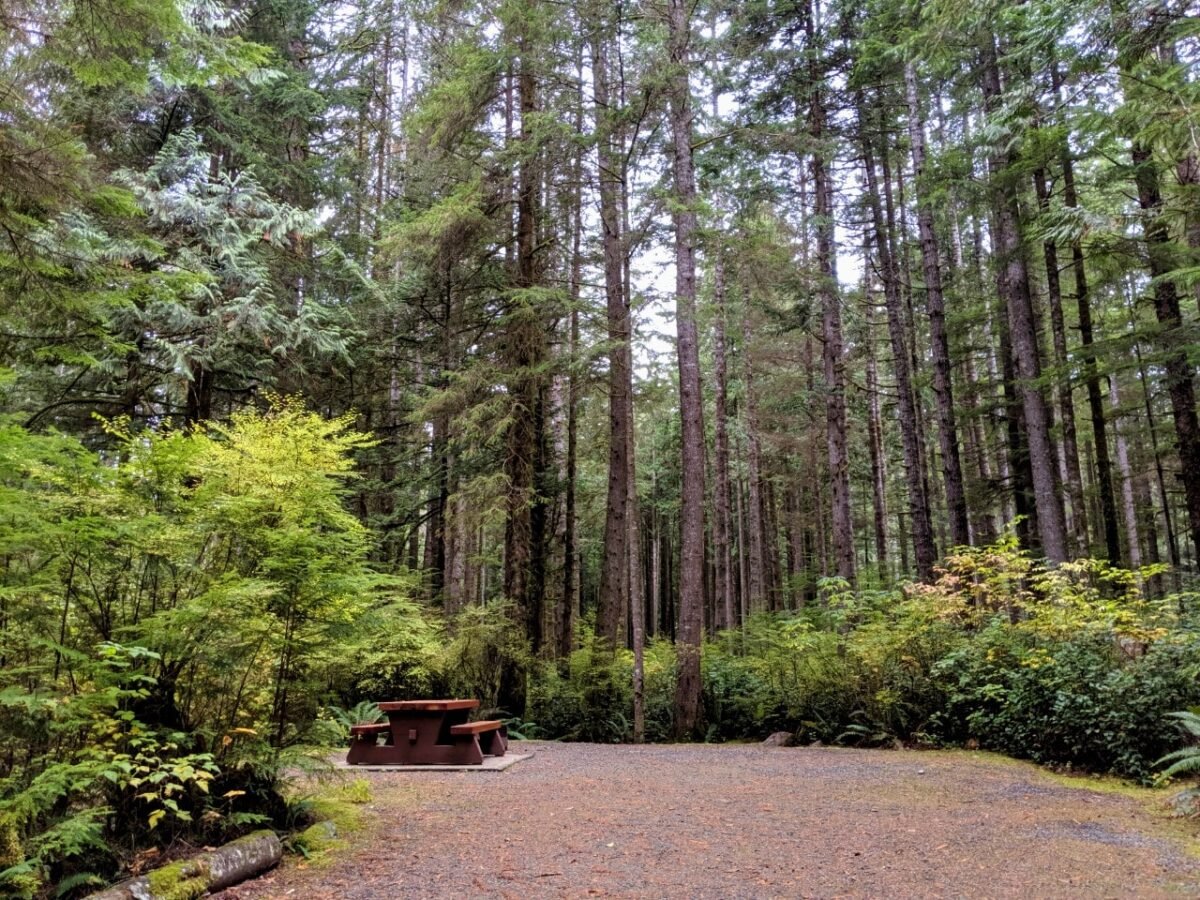
Essential camping gear
As mentioned above, it’s not a bad idea to borrow or rent camping equipment for your first camping trip. Not only does this mean less initial investment, but you’ll also have a better idea of what you may want to buy.
If you do want to make some purchases, however, here are some tips to keep in mind.
This section is written with car campers using tents as a focus, but anyone using an RV or van may still find it helpful!

Tent
Tents are usually sold with ‘person’ size being the biggest defining factor (two person, three person etc.) If you have the budget to do so, get a bigger tent than necessary. A three person tent will be more comfortable for two, and a six person tent roomy for a four or five person group.
Size and weight aren’t really an issue when car camping since you’re carrying the tent such a short distance, unless you plan to potentially use the tent for multi-day hiking in the future.
Other factors you may want to consider include the number and size of vestibules (great for storing dirty or wet items outside the main sleeping area) and the tent peak height (do you want to be able to stand?)
Sleeping bag
The most important feature of sleeping bags for car camping is the temperature rating. Always keep in mind that this usually refers to a minimum comfort level. It doesn’t mean you’re going to be necessarily warm and comfortable at that temperature.
Summer sleeping bags are cheaper and more lightweight but have very little insulation and can only be used during the hottest months of the year. If in doubt, either go warmer or bring an extra blanket or two.
Most car camping sleeping bags are rectangular, while sleeping bags for backpacking trips are typically in a ‘mummy’ shape and pack down a lot smaller.
Sleeping pad/mat
Think of a sleeping mat like a mattress on a bed. Not only does it separate you from the cold ground, it also provides a much more comfortable surface to sleep on.
When choosing a sleeping mat, look at the length, width and thickness as well as the ‘R-value.’
The R-value is a rating to demonstrate how much insulation the mat has. The higher the number (1-10), the more insulated it will be. If you’re camping in warm temperatures, a rating of three or less is fine. 3-4 is great for use from spring to autumn in most climates.
Stove
A two burner propane stove is the perfect car camping cooker. Not only are they affordable and easy to use, but the green propane canisters can be found almost anywhere (Walmart, gas stations, grocery stores). Coleman stoves, in particular, also last for years.
Two burners is ideal for multi-tasking, such as making tea or coffee while cooking breakfast eggs.
Bring a couple of propane canisters on your first camping trip, so you can experiment with how long the fuel lasts. Even if the stove has an in-built lighter, it’s still a good idea to bring another (just in case!) Another accessory that may be appreciated is a folding camp stove toaster.

Cooler
You may already have one of these, so be sure to bring it! It’s the easiest way to store food and drinks while camping. Be sure not to overfill it so it can close properly and insulate the contents.
For reference, block ice stays frozen a lot longer than cubed ice. For the ultimate in camp chilling, consider investing into a cooler with extra thick insulation (such as this YETI cooler).
Plates, utensils and cookware
Bring everything you need for food preparation and meals, including plates, utensils, kitchen knives, pots, frying pans etc. You can buy camp specific plates and cookware, but I wouldn’t bother for your first camping trip unless you only have fine china at home!
It’s also a good idea to bring a wash basin (or even two) with a basic cleaning kit. This could include biodegradable soap, a tea towel and scrubber.
If you’re planning to cook on the fire, be sure to bring some stainless or cast iron steel pots and pans (and be prepared for them to get a little beaten up). Something like this is ideal. Don’t forget to bring an insulated glove and stainless steel tongs as well. Provincial park campsites usually have grills on the campfire rings but they are not always usable – consider bringing your own.
Lighting
Most campgrounds will have very little lighting so you’ll need to bring your own. A flashlight will do but it’s much easier to use a headlamp.
This will free up your hands and make it much easier to find items in the car, arrange the sleeping bags or use the outhouses at night.
Another option is a lantern. These offer wonderful ambient light, particularly great when camping in a group.
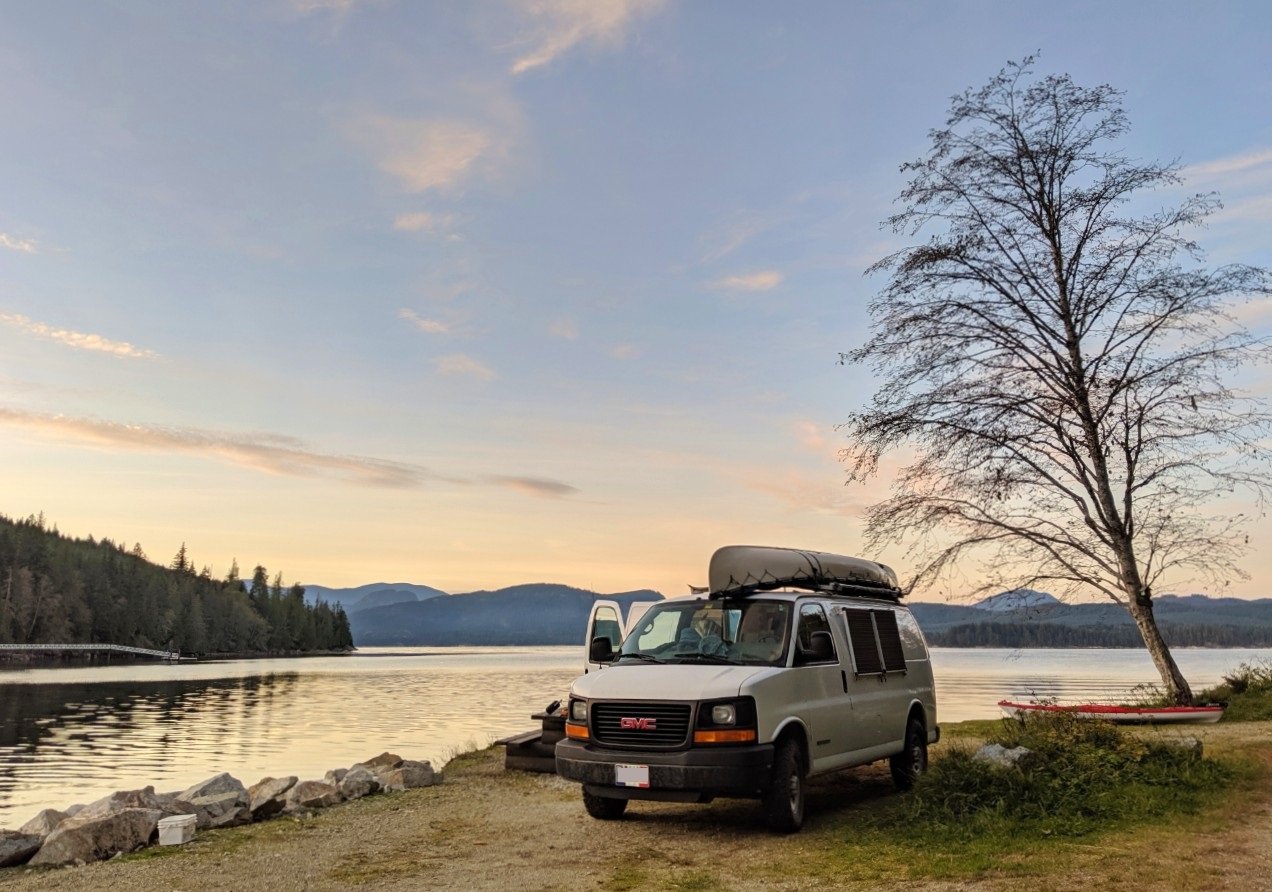
Toiletries
Don’t forget all of your personal necessities such as toothpaste, toothbrushes, medication, hairbrushes etc! Keep these in the vehicle overnight (and when not at camp) as they can be an attractant to some animals such as bears.
First aid kit
A first aid kit is an absolute necessity on any camping trip. Your own requirements will vary but I always make sure that my first aid kit includes adhesive bandages (of various sizes), antihistamines, ibuprofen, sting relief, antiseptic cream, sterile wipes, tweezers, scissors, medical tape, safety pins, gauze pads and bandages.
Consider purchasing a basic camping first aid kit and then individually customizing it to your own needs.
Water purification
The majority of provincial/national park campgrounds and private campgrounds have running water available. Most of the time, this will be treated water so you can drink and use it as normal. In this case, you’ll just need to have some kind of large water receptacle to store water at your campsite.
If not marked as drinkable, you should always treat water first to remove any possible waterborne bacteria. This is also true if you collect water from a river or lake. To do this, you can use a filter, UV light or water purification tablets.
Other useful items
This category is a mix of random but very useful camping items.
- The first of these is a knife, which can be so handy to have for so many reasons!
- Sunscreen is a must for camping at any time of year. Even on cloudy days, it is so easy to get burnt. A sun hat and sunglasses are also a good idea.
- Always anticipate biting insects and bring some kind of repellent. More info on recommended products below.
- A tarp can provide shade on sunny days and shelter on rainier ones. It’s a good idea to have some practice at home first before setting up in the campground.
- Camping chairs are a welcome extra (either the standard or more lightweight kind), especially if you plan to sit by the fire often. Picnic tables are great for meals but don’t offer the most comfortable of seats!
My last recommendation is to bring toilet paper. Private and provincial/national park campgrounds should supply some but it may not always be topped up as quickly as needed.
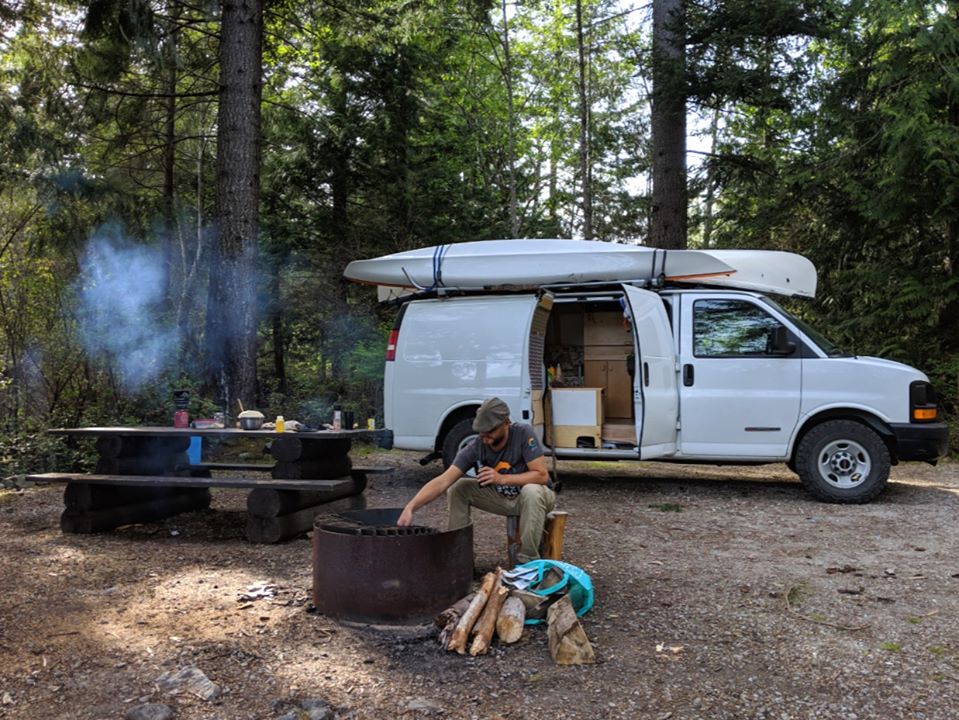
Campsite do’s and don’ts
There are some common mistakes that people make when camping for the first time. Follow these do’s and don’ts and you’ll be well on your way to an awesome first time camping experience!
DO keep a clean camp!
Keeping a clean camp is so important to avoid attracting wildlife to the area. Feeding wild animals (whether intentionally or not, more info below) is always a bad idea, so help do your part to keep wildlife wild!
Be sure to secure all food related items (including coolers and dishes) and attractants (garbage, toiletries) inside your vehicle overnight and when not at your campsite – in many places, it’s actually illegal not to. No vehicle? Use the provided food locker or make a bear hang.
DON’T get bitten or stung!
Insects are an unavoidable part of camping. Mosquitoes are a common pest, but blackflies, deerflies and ticks* are other biting bugs to watch out for. Wasps and bees are also common visitors to campsites.
Biting bugs are usually most prevalent in spring (May, June) but can be present throughout the summer. Using repellent is the easiest way to ward off insects, but other options include mosquito coils, citronella candles, portable mosquito repellers, mosquito gazebo tents, repellent lamps and head nets.
*It is important to check regularly for ticks, especially when camping in areas with high grass

DO dispose of cigarette butts responsibly
Smoking (tobacco, vaping and cannabis in BC) is generally allowed in campgrounds, though at your individual campsite only. It is so important, however, to be aware of the very real risk of wildfires and dispose of cigarette butts and other smoking materials responsibly.
DON’T damage live trees and plants
The natural world is beautiful but can be so easily damaged. Picking a flower or two may seem insignificant but if every camper did it, there wouldn’t be many left to admire.
Leave flowers and other plants to grow. Stay on established trails to avoid damage to undergrowth. Don’t hammer nails into trees or carve names into bark.
DO consider your fellow campers!
Sound travels further in open air, especially loud talking and music. Many people enjoy listening to the noises of nature (birds, trees, ocean etc) when camping. Be considerate of the other people around you and keep the noise down.
Most provincial and national park campgrounds have a quiet time policy from 10pm to 7am (sometimes 6am)
DON’T wash in the lake or river!
Swimming in lakes and rivers is a classic camping activity but it is important not to wash dishes or your body in the water.
Most soap and shower products contain phosphates, which help to remove sweat and grease. An increase in phosphates in rivers and lakes can result in increased algae and aquatic plants, permanently changing the ecosystem. Many waterways are also sources of drinking water.
This is still a problem with biodegradable soaps, as they can only break down properly in soil.
Rinsing off (without soap) in a lake or river is fine, as is swimming. When washing dishes, dispose of the dirty water in an outhouse or at a dishwashing station (if applicable)
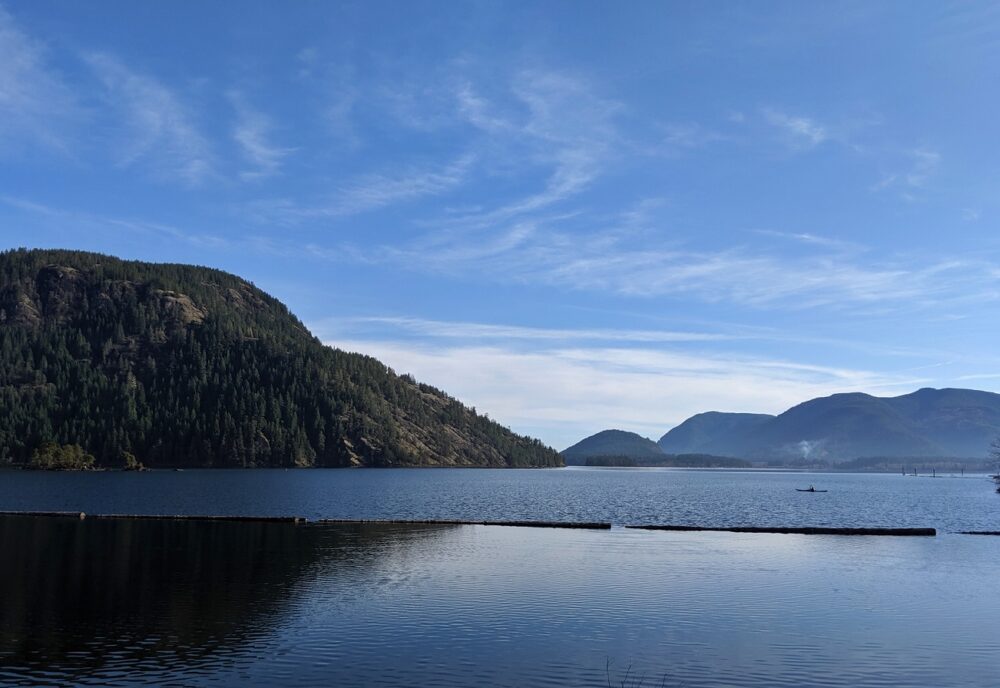
DO arrive as early as possible!
Make the most of your first time camping trip by arriving as early as possible to the campground. This way, you can set up the tent and get organised in the daylight and then have the rest of the afternoon to take it all in. Arriving in the dark is not preferably, especially on your first ever camping trip.
DO have fun!
It may seem like there are many things to think about when camping for the first time but remember that you’re there to enjoy the experience too! Take a moment to sit back, listen to the sounds of nature and relax.
Campfire safety
For many people, a campfire is an integral part of camping. Some campers just like to watch the flickering flames, others like to cook on the burning coals. Campfires can also be used as a source of heat during cooler evenings.
A campfire is usually defined as an open fire (no larger than 0.5 m in height and 0.5 m in width) used for recreational purposes.
- Always use the designated fire rings or existing campfire pits
- Before leaving home, check the local regulations to make sure campfires are allowed in your destination location. For British Columbia, you can check here.
- Also check the details of your intended campground as some do not allow campfires, or only during a certain time of day
- Keep campfires small to conserve firewood and improve air quality
- Don’t gather firewood from around your campsite. Dead wood helps soil quality and is also an animal habitat
- Most campgrounds have firewood available for purchase
- In some areas, bringing firewood from outside the campground is not allowed due to the risk of invasive bugs
- Keep a shovel or 8 litres of water nearby to extinguish the fire quickly if needed
- Never leave the campfire unattended
- When finished, ensure the campfire is fully extinguished before leaving. The ashes of the fire must be cool to the touch
Building a successful campfire is all about the foundations – tinder and kindling. These small pieces of wood enable the fire to start while the actual firewood logs allow it to continue burning into the evening. Check out REI’s excellent firestarting guide (with video)
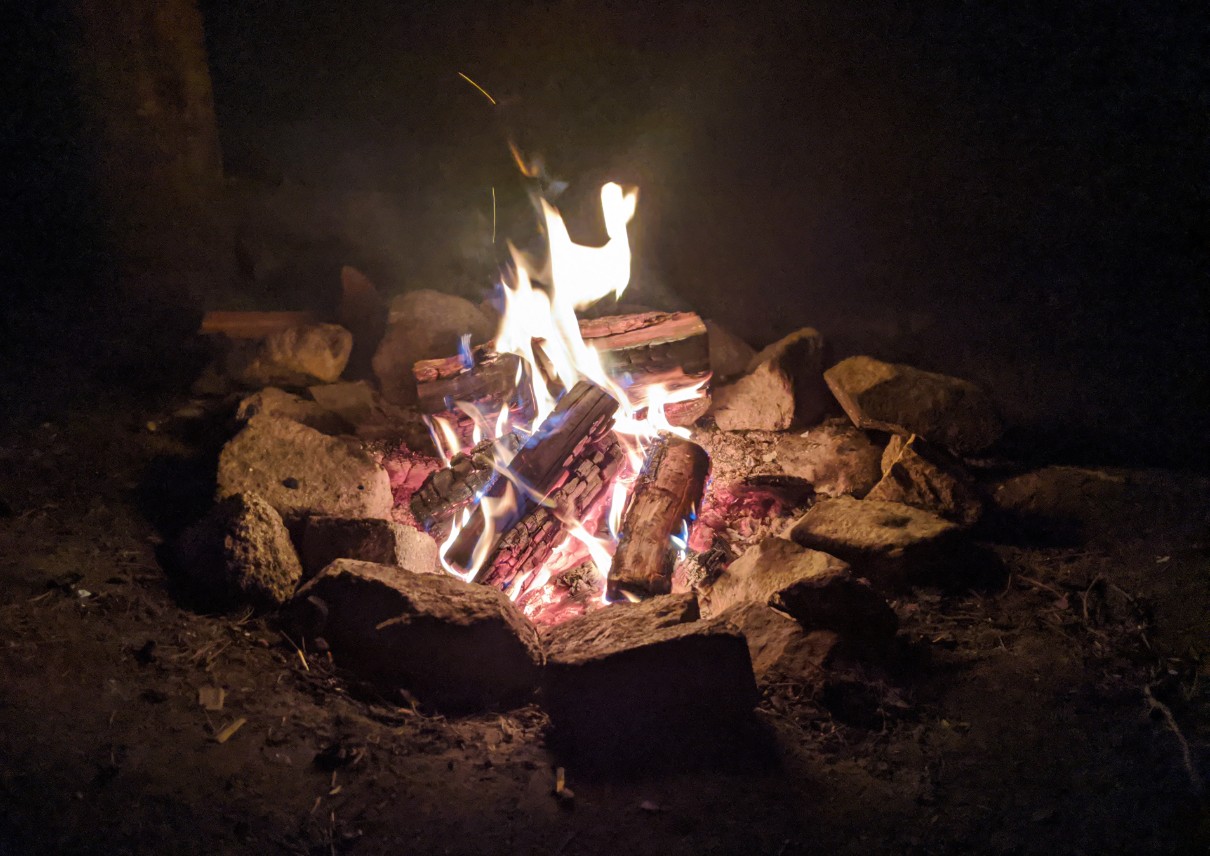
Wildlife guidelines
The chance to see wildlife is one of the most fun parts of camping. It is so important, however, to respect wildlife and ensure that your camping trip does not harm any animal.
One key way to do this is to never feed wildlife! Feeding wild animal can lead to a number of serious issues:
- Human food just isn’t good for animals to eat. It can cause them long lasting health issues
- It teaches animals that humans provide food and they are more likely to seek out human food again
- Receiving food from humans makes wild animals lose their natural fear of people. This is a safety risk
Even if you don’t intentionally mean to feed animals, you may accidentally do it by leaving food and/or attractants out at your campsite. This includes used dishes, garbage, coolers and toiletries.
Every year, a number of wild animals (including bears) are put down due to negligent campers. To do your part in reducing this problem, keep your campsite clean and secure all food and attractants inside your vehicle overnight and when not at your campsite.
Other important wildlife guidelines when camping are:
- Keep a safe distance from wild animals – at least 30m away from large animals and 100m away from bears, wolves, coyotes and cougars
- Stay alert and aware of your surroundings
- Make noise to signal animals to your presence
- Respect park signs and closures
- Stay on trails
- Keep dogs on leash
- Know what to do if you encounter a bear
If tent or backcountry camping in isolated areas, consider buying bear spray. It’s only for emergency situations and most people will never have to use it, but it can be reassuring to have. Carry it in a holster and be sure to learn how to use it properly first.

Read these posts next for more camping inspiration!
25+ of the Best Campgrounds on Vancouver Island, British Columbia
How to Reserve Backcountry Camping in BC: Essential Details and Dates
The Complete Guide to Finding Free Camping in Canada
11 of the Best Campgrounds in Nova Scotia
9 Awesome FREE Campsites in British Columbia
How to Go Camping in British Columbia Without a Reservation

One half of the Canadian/British couple behind Off Track Travel, Gemma is happiest when hiking on the trail or planning the next big travel adventure. JR and Gemma are currently based in the beautiful Okanagan Valley, British Columbia, Canada. Consider buying us a coffee if you have find any of our guides helpful!
